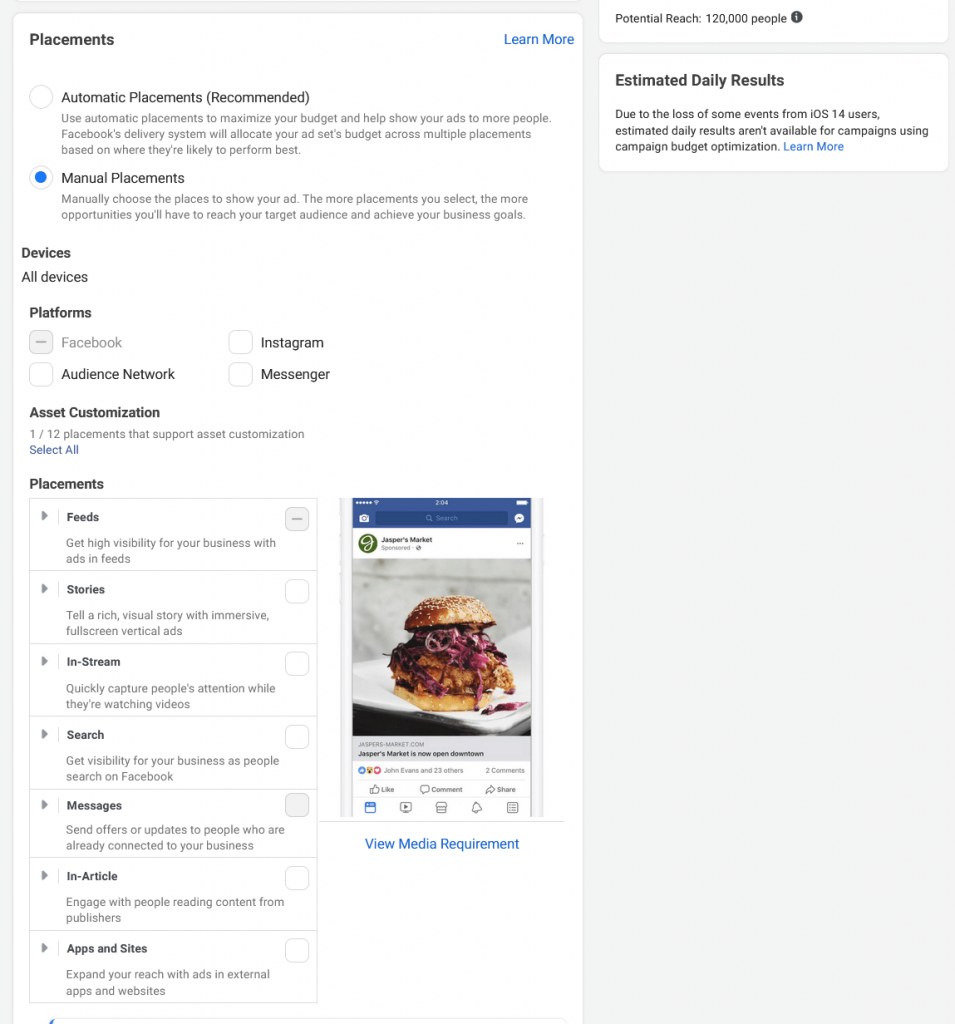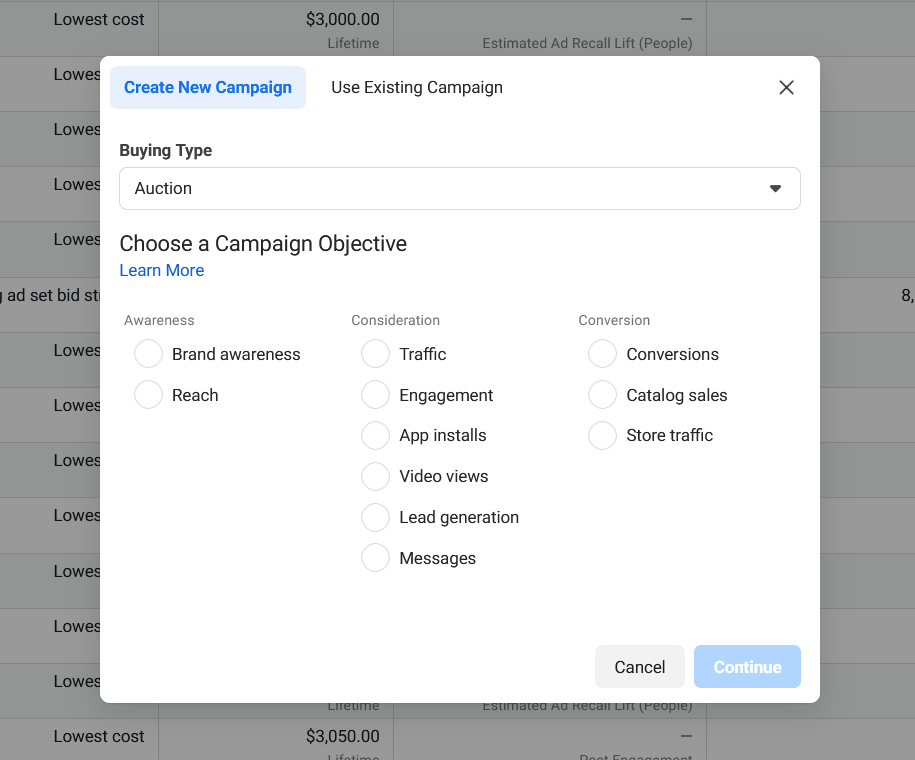What are the basics of Facebook advertising and ad placements?
Whether you’re a digital advertiser or not, you’re familiar with Facebook advertising so long as you’ve spent one single second on Facebook. Here, you have the option of many different ad types — boosted posts, external link click ads, carousel ads, video ads, display ads, and more.
Along with their inherent advertising value, advertising on Facebook is also a useful foundation for your future advertising efforts on other platforms, since doing so gives you native user data from Facebook’s Audience Insights features such as the ages and genders of those who interact with your ads, their education, job role, locations, other interests, etc.
Before reaping the advantages of this work, one of the decisions you must make about your ads here are their placements. As you can guess, placements are simply the places on Facebook where your ads are run. Currently, your placement options include in the feed, stories, in-stream, search, messages, in-article, and apps.
Before we continue, here’s a brief rundown on each placement option:

Facebook Manual Placement Menu
Feed: Here, ads show up as people scroll through their Facebook News Feed (including in the right column) or Instagram feed. Depending on your ad type, it could also appear in Marketplace, Messenger, or Facebook Watch.
Stories: These ads appear in between others’ Facebook, Instagram, or Messenger stories.
In-stream: Similar to story ads, in-stream ad placements are video ads that play before, during, or right after videos, including partner live-stream content.
Search: Think Google search ads, just… on Facebook. These are ads that appear up top when someone searches on Facebook or on Facebook Marketplace.
Messages: These are sponsored messages that show up to people who have initiated a conversation with your page on Messenger.
In-article: Only available on Facebook’s mobile app, these are ads that appear within Instant Articles.
And, lastly…
Apps: These ads appear within external apps that are hosted on Facebook. These ads can be both video or image.
So these are the different ad placement options. But what do their differences lend, and how should you approach their relationship with your own campaigns?
Using placements that work best with your Facebook advertising strategy
In the same way that advertising won’t work its best if you just focus on one type of platform, focusing on just one placement type won’t get you the optimal results. The people you’re trying to connect with spend time on multiple devices, apps, and platforms — how can you use this knowledge to make your campaigns as effective as possible?

Facebook Ads Creation Menu
Just like so much with digital marketing, the first step to crafting an effective strategy here is identifying your goal. On a broad scale, this means choosing whether this campaign is trying to increase awareness, consideration, or conversions, but it also means you have to know what your audience looks like because different demographics use Facebook and the Facebook-owned Instagram differently.
For example, those who use stories tend to skew younger — you probably won’t want to heavily market yourself via this medium if your campaign is for, say, adult diapers. Another example relating to your goal: carousel ads in the feed placement are a great method to show off multiple products to users who’ve shown interest in the past and might be more likely to convert.
In general, along with identifying the primary goal of your campaign and your target audience, you just want to get as tangible and specific as possible. Like back to the devices, apps, and platforms — how does your audience use each of these? Are they more often on Facebook on mobile? Do they frequent any in-platform apps? Are they more often on Facebook proper (likely an older crowd) or are they using Facebook itself less and spending more time just on Messenger (many millennials, for example) or Instagram (oftentimes Gen Z and a mix of millennials)?
How do your answers to these questions affect ad placements? As an example, if your audience is accessing Facebook and its platforms primarily via mobile, you’d want to emphasize placements that are more in-tune with that device. Or if your audience is on the younger side, advertising in stories carries weight. Just like with all digital advertising decisions, deciding on an effective placement strategy requires tangibly breaking down the factors that inform it and building from there.
But of course, before we finish, the reminder that we leave on so many of our blog posts: no setting it and forgetting it! Just like with everything, test your placements frequently and track your campaign’s performance. Define specific tests with measurable key performance indicators beforehand and continuously monitor them as time goes on.
Adapting your variables to improve performance is key to getting the most out of anything when it comes to online marketing — Facebook ad placements are no exception. As long as your efforts are guided by that principle, you’re setting yourself up for success.




